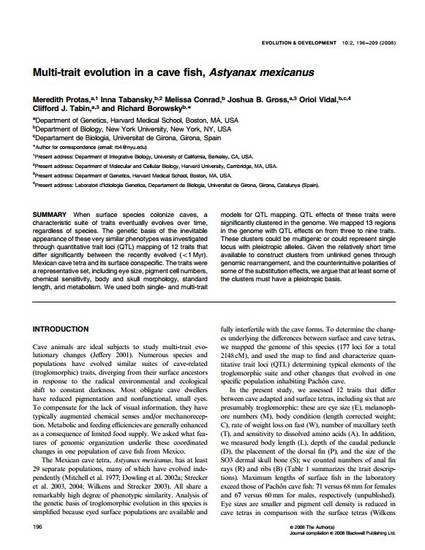
Article
Multi-trait evolution in a cave fish, Astyanax mexicanus
Evolution & Development
(2008)
Abstract
SUMMARY When surface species colonize caves, a characteristic suite of traits eventually evolves over time, regardless of species. The genetic basis of the inevitable appearance of these very similar phenotypes was investigated through quantitative trait loci (QTL) mapping of 12 traits that differ significantly between the recently evolved (<1 Myr). Mexican cave tetra and its surface conspecific. The traits were a representative set, including eye size, pigment cell numbers, chemical sensitivity, body and skull morphology, standard length, and metabolism. We used both single- and multi-trait models for QTL mapping. QTL effects of these traits were significantly clustered in the genome. We mapped 13 regions in the genome with QTL effects on from three to nine traits. These clusters could be multigenic or could represent single locus with pleiotropic alleles. Given the relatively short time available to construct clusters from unlinked genes through genomic rearrangement, and the counterintuitive polarities of some of the substitution effects, we argue that at least some of the clusters must have a pleiotropic basis.
Publication Date
March 3, 2008
Citation Information
Meredith E. Protas, Inna Tabansky, Melissa Conrad, Joshua B. Gross, et al.. "Multi-trait evolution in a cave fish, Astyanax mexicanus" Evolution & Development Vol. 10 Iss. 2 (2008) p. 196 - 209 ISSN: 1520-541X Available at: http://works.bepress.com/meredith-protas/15/
